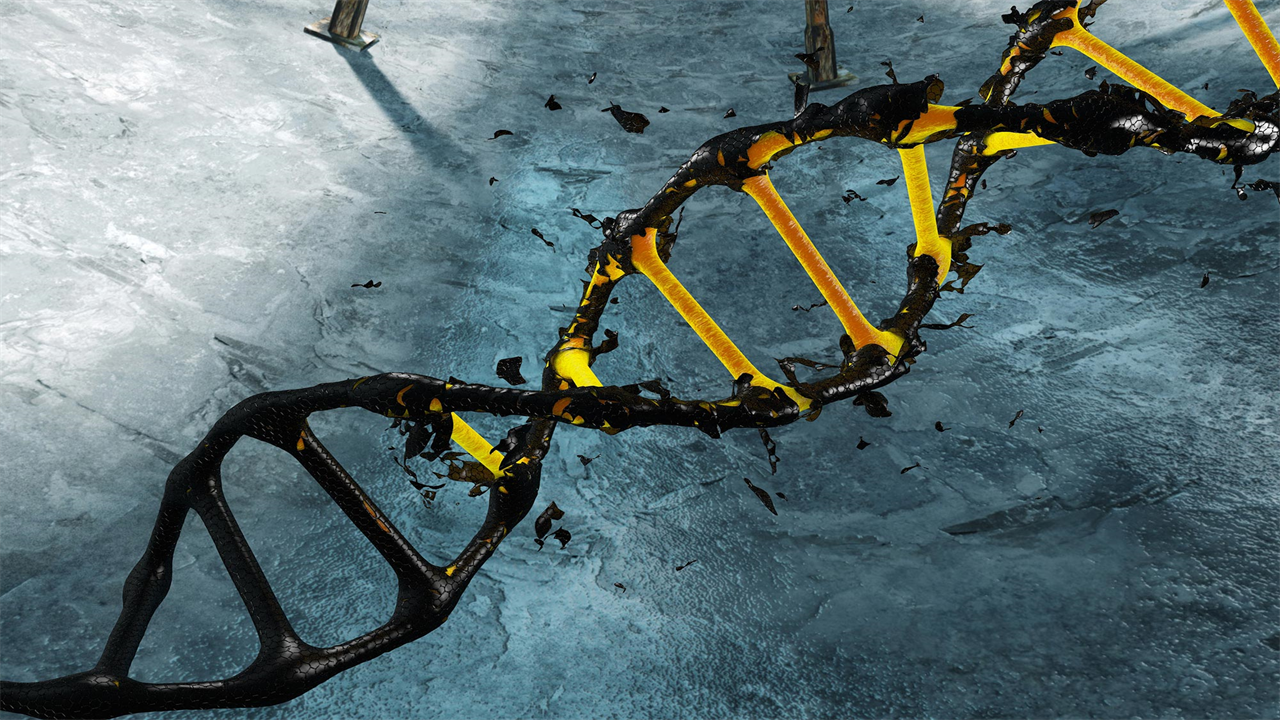Researchers Discover Evidence of a Major Coronavirus Epidemic 20,000 Years Ago
0 View
Share this Video
- Publish Date:
- 4 October, 2021
- Category:
- Covid
- Video License
- Standard License
- Imported From:
- Youtube
Tags

Studying the genomes of modern humans from 26 global populations, researchers discovered the genetic “footprint” of an ancient coronavirus outbreak. Studies like these can help identify viruses that have caused epidemics in the distant past and may do so in the future.
A new study, co-authored by a University of Arizona researcher, has found that a coronavirus epidemic broke out in the East Asia region more than 20,000 years ago, with traces of the outbreak evident in the genetic makeup of people from that area. .
In a paper published in Current Biology, researchers analyzed the genomes of more than 2,500 modern humans from 26 populations around the world, to better understand how humans have adapted to historic coronavirus outbreaks. The team, co-led by researchers from the University of Arizona and the University of Adelaide, used computational methods to discover genetic traces of adaptation to coronaviruses, the family of viruses responsible for three major outbreaks over the past 20 years, including the ongoing COVID-19 -19 pandemic.
In the past 20 years, there have been three outbreaks of epidemic severe coronaviruses: SARS-CoV leading to Severe Acute Respiratory Syndrome, which originated in China in 2002 and affected more than 800 people; MERS-CoV leads to Middle East respiratory syndrome, killing more than 850 people; and SARS-CoV-2 leading to COVID-19, which killed 3.8 million people.
But this study of the evolution of the human genome has revealed that another major coronavirus epidemic broke out thousands of years earlier.
“It’s like finding fossilized dinosaur footprints instead of finding fossilized bones directly,” said David Enard, a professor in UArizona’s Department of Ecology and Evolutionary Biology and one of the lead authors on the study. “We didn’t find the ancient virus directly — instead, we found signatures of the natural selection it imposed on human genomes at the time of an ancient epidemic.”
David Enard is an assistant professor in the Department of Ecology and Evolutionary Biology. His research group studies adaptation in the genome of humans and other vertebrates, with a particular focus on adaptation in response to ancient epidemics. Credit: Courtesy of David Enard
The team synthesized both human and SARS-CoV-2 proteins, without using living cells, and showed that they interacted directly, pointing specifically to the conserved nature of the mechanism coronaviruses use to invade cells. Modern human genomes contain evolutionary information dating back hundreds of thousands of years, including physiological and immunological adaptations that have enabled humans to survive emerging threats, including viruses.
The results showed that the ancestors of East Asian people had an epidemic of a disease caused by the coronavirus, similar to COVID-19. East Asian people come from the area that is now China, Japan, Mongolia, North Korea, South Korea, and Taiwan.
To invade cells, a virus must attach to and interact with specific proteins produced by the host cell, known as viral interaction proteins or VIPs. The researchers found signs of adaptation in 42 different human genes that code for VIPs, suggesting that the ancestors of modern East Asians were first exposed to coronaviruses more than 20,000 years ago.
“We found that the 42 VIPs are mainly active in the lungs – the tissue most affected by coronaviruses – and confirmed that they interact directly with the virus underlying the current pandemic,” said the paper’s lead author. , Yassine Souilmi of the University of Adelaide’s School of Biological. Sciences.
In addition to the VIPs, which reside on the surface of a host cell and are used by coronaviruses to enter the cell, once inside, the viruses interact with many other cellular proteins.
“We found that those human genes that code for proteins that prevent or help the virus multiply, about 25,000 years ago experienced much more natural selection than you would normally expect,” Enard said.
The work shows that over the course of the epidemic, selection favored certain variants of human genes involved in the virus-cell interactions that could have led to less severe disease. Studying the “tracks” left by ancient viruses could help researchers better understand how the genomes of different human populations have adapted to viruses that have emerged as key drivers of human evolution.
Other independent studies have shown that mutations in VIP genes can mediate susceptibility to coronavirus and also the severity of COVID-19 symptoms. And several VIPs are currently being used in drug treatments for COVID-19 or are part of clinical trials for further drug development.
“Our past interactions with viruses have left telltale genetic signals that we can use to identify genes that influence infection and disease in modern populations, and may provide information about drug repurposing and the development of new treatments,” said co-author Ray Tobler from the university. from Adelaide’s School of Biological Sciences.
“By uncovering the genes previously affected by historical viral outbreaks, our study points to the promise of evolutionary genetic analysis as a new tool in combating the outbreaks of the future,” Souilmi said.
The study authors say their research could help identify viruses that have caused epidemics in the distant past and may do so in the future. Studies like theirs help researchers compile a list of potentially dangerous viruses and then develop diagnoses, vaccines and drugs in case they return.
Reference: “An Ancient Viral Epidemic Involving Genes Interacting Host Coronavirus More Than 20,000 Years Ago in East Asia” by Yassine Souilmi, M. Elise Lauterbur, Ray Tobler, Christian D. Huber, Angad S. Johar, Shayli Varasteh Moradi, Wayne A. Johnston, Nevan J. Krogan, Kirill Alexandrov, and David Enard, June 24, 2021, Current Biology.
DOI: 10.116/j.cub.2021.05.067










